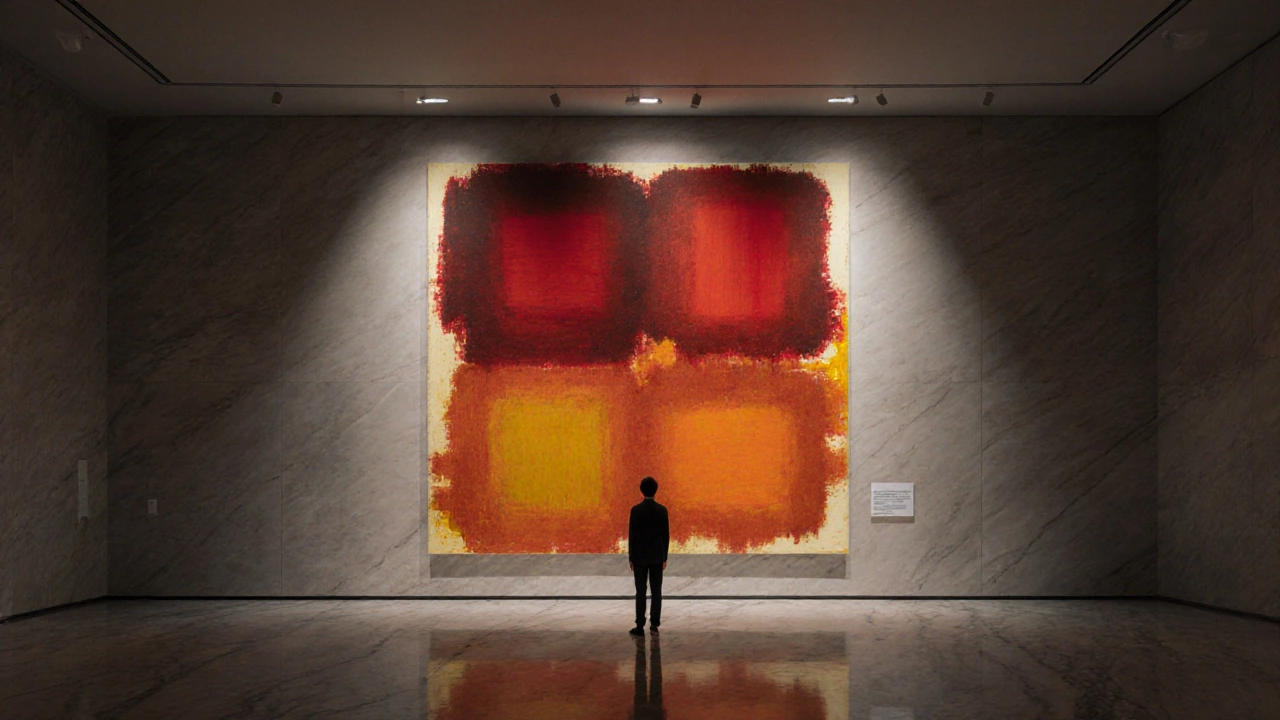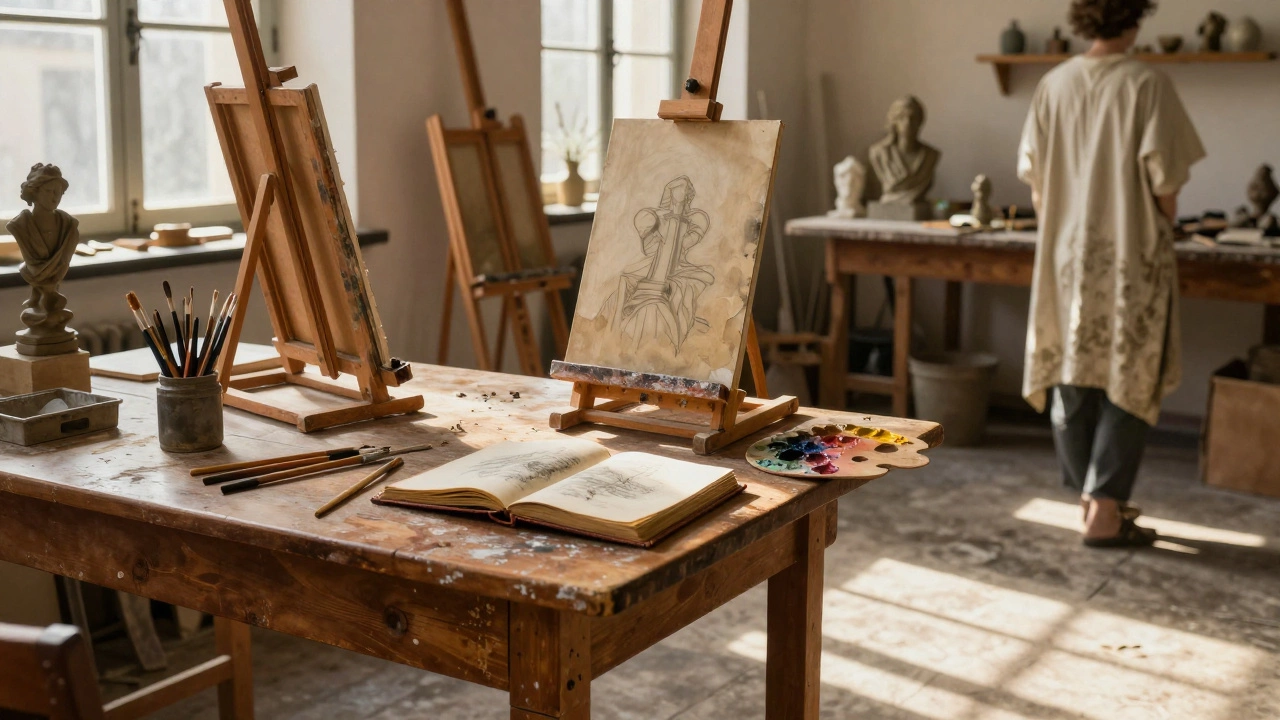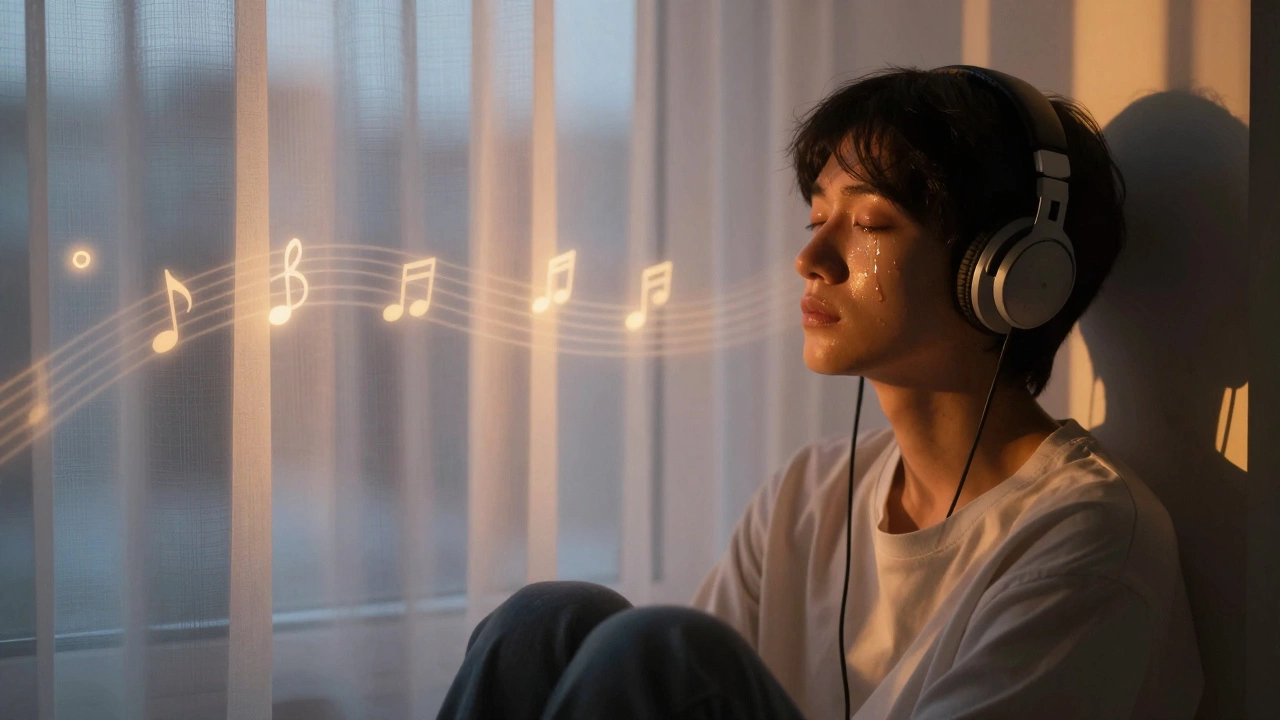Abstract Art Value Estimator
Estimate the potential value of an abstract artwork based on key factors like artist prominence, condition, provenance, and more. This tool helps you understand what drives value in the abstract art market.
When you hear "most sold abstract art," you might picture a single painting hanging in a billionaire’s living room. But the truth is, there’s no one piece that dominates sales like a pop song on the charts. Abstract art doesn’t have a single #1 hit-it has dozens of heavy hitters, each selling for millions, often multiple times over. And the reason? It’s not just about beauty. It’s about history, scarcity, and the quiet power of a brushstroke that says more than a thousand words.
What Makes Abstract Art Sell?
Abstract art doesn’t show a tree, a face, or a city skyline. It shows emotion, energy, or thought. That’s why it’s so hard to pin down. But if you look at auction records, private sales, and gallery trends, you’ll see patterns. Buyers aren’t just buying color and shape-they’re buying legacy. They’re buying into the story of an artist who changed how we see the world.
Take Mark Rothko. His large, floating rectangles of color don’t look like much at first glance. But in 2012, his painting Orange, Red, Yellow sold for $86.9 million. Why? Because Rothko didn’t paint pictures-he created emotional spaces. People who bought his work weren’t decorating a wall. They were buying a moment of stillness, a quiet kind of power that only his paintings deliver.
Wassily Kandinsky’s works, like Composition VIII, sell for similar prices. His art was among the first to break completely from representation. He believed color and form could move the soul without showing anything real. That idea was radical in 1923. Today, it’s priceless.
The Top Contenders: Most Sold Abstract Artworks
There’s no official leaderboard, but auction houses like Christie’s and Sotheby’s keep records. Based on verified sales since 2000, here are the top five abstract artworks by price:
| Artwork | Artist | Year | Sale Price (USD) | Buyer Type |
|---|---|---|---|---|
| Orange, Red, Yellow | Mark Rothko | 1961 | $86.9 million | Private Collector |
| Interchange | Willem de Kooning | 1955 | $300 million (private sale) | Private Collector |
| Composition VIII | Wassily Kandinsky | 1923 | $50.5 million | Museum |
| No. 6 (Violet, Green and Red) | Mark Rothko | 1951 | $46.5 million | Private Collector |
| Number 17A | Jackson Pollock | 1948 | $40 million | Private Collector |
Notice something? Rothko and de Kooning dominate. Why? Because their work is rare. Rothko painted fewer than 200 major canvases in his lifetime. De Kooning’s Interchange was sold privately in 2015 for $300 million-the highest price ever paid for a work of art by an American artist. That sale wasn’t public, but it was confirmed by multiple sources including The New York Times and Christie’s internal reports.
Pollock’s drip paintings are also in high demand. His Number 17A sold for $40 million in 2015. But here’s the catch: most of his best pieces are in museums. Only a handful are available on the open market-and when they appear, collectors fight over them.
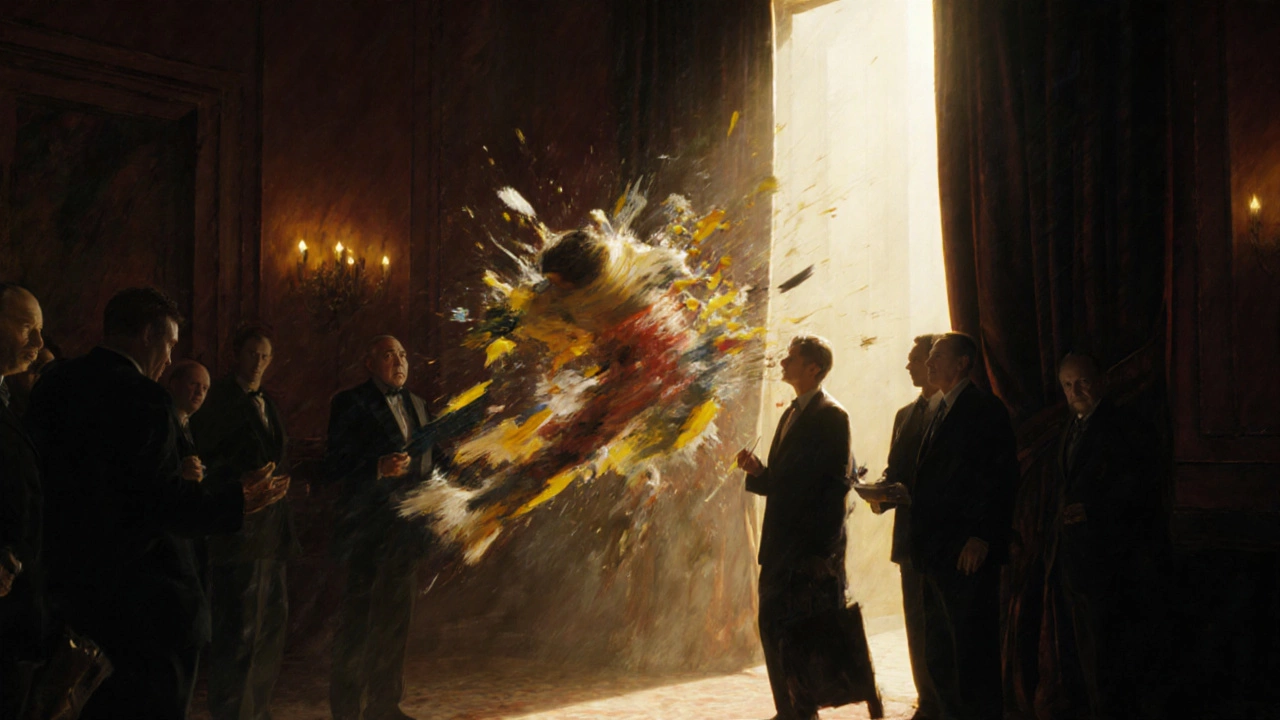
Why These Artists, Not Others?
There are thousands of abstract artists. Why do only a few sell for hundreds of millions?
First, timing. Rothko, Kandinsky, and de Kooning were pioneers. They didn’t just paint abstractly-they defined what abstract art could be. Their work is the foundation. Later artists build on their language.
Second, scarcity. Rothko died in 1970. He didn’t mass-produce. Each painting was a unique, hand-crafted experience. That’s why galleries don’t have racks of Rothkos-they have one or two per decade.
Third, cultural weight. These artists are taught in every art school. Their names are as recognizable as Picasso or Van Gogh. When a museum wants to show the evolution of modern art, they need a Rothko. When a billionaire wants to prove they own the pinnacle of 20th-century culture, they buy a de Kooning.
Compare that to a living abstract artist like Gerhard Richter. His Abstraktes Bild series sells for up to $46 million, but he’s still alive and producing. That means more supply. And supply lowers the price ceiling.
What About Cheaper Abstract Art?
Most people won’t buy a $300 million painting. But that doesn’t mean abstract art is out of reach. The real market isn’t just the top 1%. It’s the thousands of smaller works sold every year.
Gallery sales of abstract art by emerging artists-think small canvases under 3 feet-average between $2,000 and $15,000. In cities like Berlin, Seoul, or Los Angeles, you can walk into a studio and buy a piece directly from the artist for under $5,000.
Online platforms like Artsy, Saatchi Art, and even Instagram have made it easier than ever to find original abstract work. A 2024 report from the Art Market Research Institute found that 68% of buyers under 40 purchased their first abstract piece online. They weren’t looking for the next Rothko. They were looking for something that moved them.
And that’s the real secret. The most sold abstract art isn’t always the most expensive. It’s the one that makes someone pause, breathe, and feel something they can’t explain.
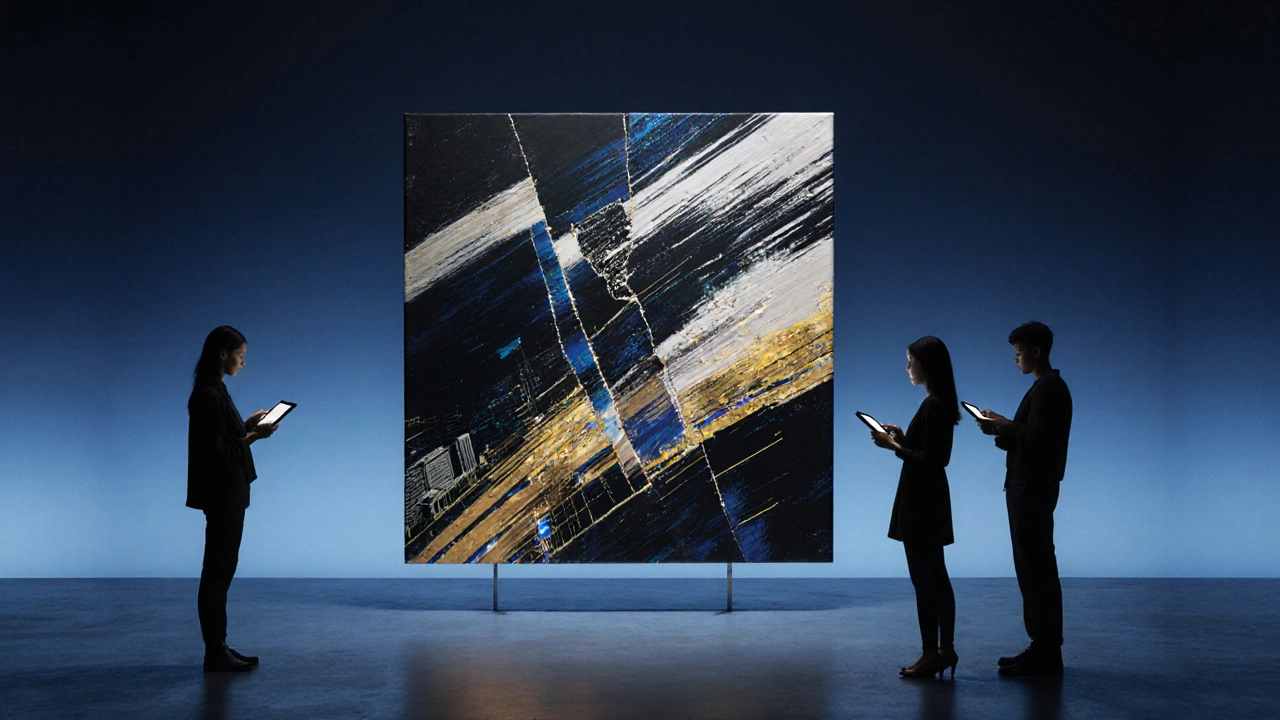
What You Need to Know Before Buying
If you’re thinking of buying abstract art-whether it’s a $3,000 piece or a $30 million one-here’s what matters:
- Provenance is everything. Where has the piece been? Who owned it? A certificate from the artist’s estate or a major gallery adds real value.
- Condition counts. Abstract art often uses thin layers of paint. A torn canvas or faded color can drop the value by 50% or more.
- Don’t buy for investment alone. The top 1% of abstract art appreciates. The rest? It might sit for years without moving. Buy what speaks to you.
- Check the artist’s track record. Has their work been shown in museums? Have they been written about in art journals? That’s the real signal of lasting value.
Many people think abstract art is random. It’s not. It’s deeply intentional. Every drip, every brushstroke, every color choice was made by a hand that knew exactly what it was doing.
What’s Next for Abstract Art?
Today, younger artists are blending digital tools with traditional techniques. Artists like Julie Mehretu and Laura Owens are pushing boundaries with layered compositions that mix mapping, architecture, and chaos. Their work is selling fast-but not yet at Rothko prices.
One thing’s certain: abstract art isn’t fading. It’s evolving. The artists who defined it in the 1950s set the bar. Now, a new generation is climbing it.
So, what’s the most sold abstract art? It’s not one painting. It’s the idea that art doesn’t need to show something to mean something. And that’s worth more than any price tag.
Is there a single most sold abstract painting in history?
No single painting holds the title of "most sold" in the way a song might top the charts. Abstract art sales are tracked by auction price, not number of copies sold. Since most abstract works are one-of-a-kind, they don’t have mass sales. Instead, the highest-priced pieces-like Willem de Kooning’s "Interchange" (sold privately for $300 million)-are considered the most valuable, not the most sold.
Why do Rothko’s paintings sell for so much?
Mark Rothko’s paintings command high prices because of their rarity, emotional depth, and historical importance. He created fewer than 200 major canvases before his death in 1970. His large color-field works were designed to evoke deep emotional responses, and collectors see them as irreplaceable. Major museums and private collectors compete for his pieces, driving prices up. His work is also foundational to modern art education, increasing its cultural weight.
Can I buy abstract art for under $10,000?
Yes, absolutely. Thousands of emerging and mid-career abstract artists sell original works for under $10,000. Many are available through online platforms like Artsy, Saatchi Art, or directly from studios. These pieces may not be by household names, but they offer authentic expression and can appreciate over time if the artist gains recognition. Buying at this level is about personal connection, not investment speculation.
Do museums buy abstract art?
Yes, museums are major buyers of important abstract art, especially works by pioneers like Kandinsky, Rothko, and Pollock. They often acquire pieces through auctions or private donations. For example, the Museum of Modern Art in New York owns multiple Rothkos and Kandinskys. Museums prioritize works with strong provenance and historical significance, even if they cost tens of millions.
Is abstract art a good investment?
Abstract art can be a good investment, but only for a small subset of works-typically by artists with museum recognition, decades of exhibition history, and limited supply. Most abstract art does not appreciate significantly. If you’re buying for investment, focus on artists with auction records, gallery representation, and scholarly attention. For most people, buying abstract art should be about personal enjoyment, not financial return.
If you’re drawn to abstract art, start by looking at what moves you-not what’s expensive. The next great piece might be in a small gallery, not a billionaire’s vault.
